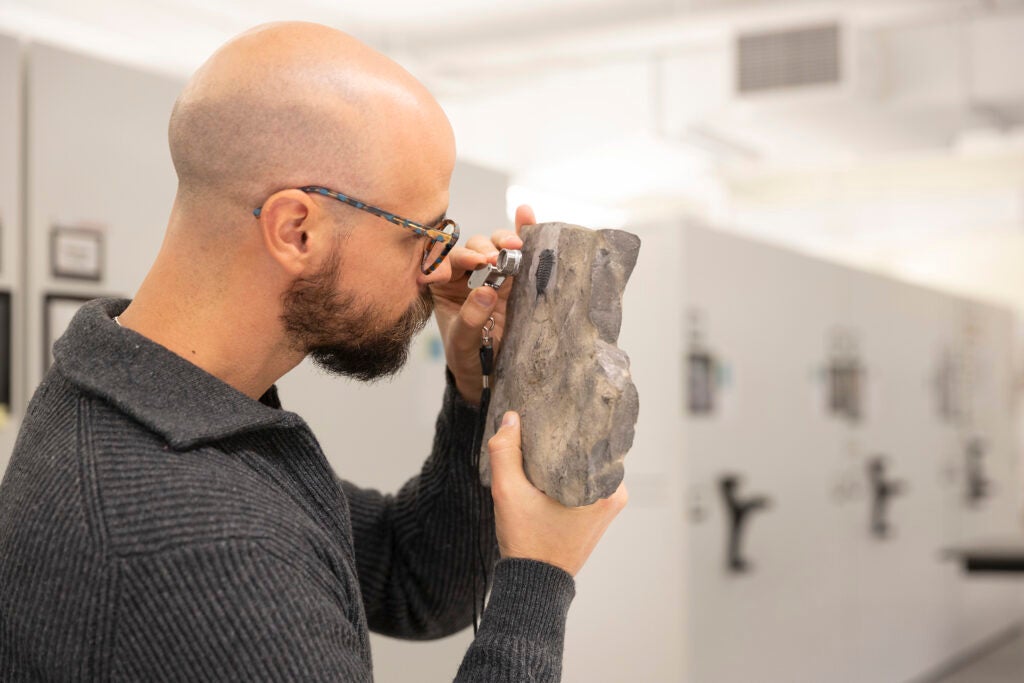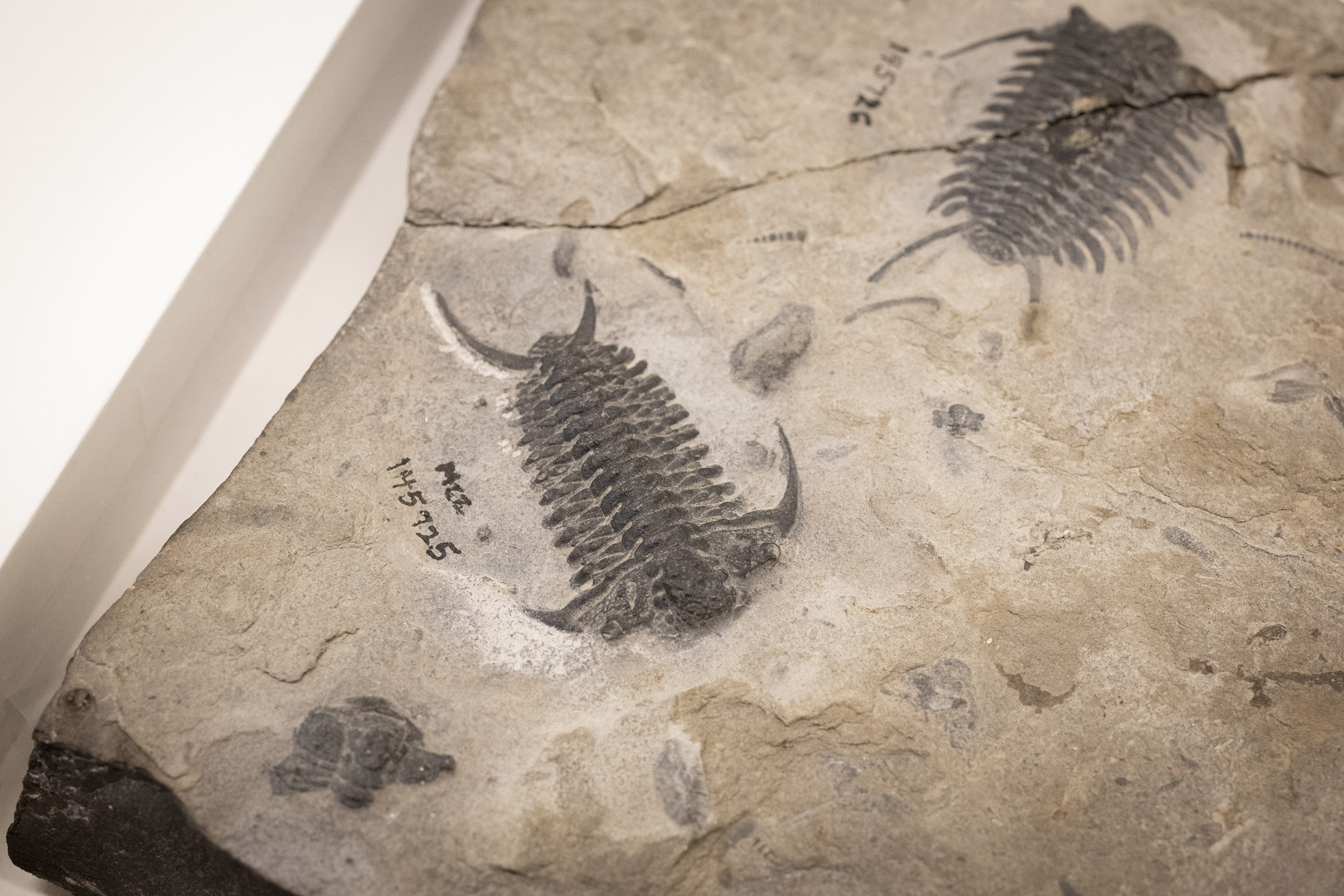
Sarah Losso with one of the trilobite glass slides.
Photos by Niles Singer/Harvard Staff Photographer
An evolutionary clue, curled up and long unstudied, in a Harvard museum
Trilobites’ soft undersides show mechanics of early ‘enrollment’ defense
New research sheds light on the soft undersides of trilobites, and the evolutionary mechanism that allowed these ancient arthropods to curl up their bodies for protection. The study was published in Proceedings of the Royal Society B.
Lead author Sarah Losso, a Ph.D. candidate in the Department of Organismic and Evolutionary Biology, describes a set of unusual, 3D trilobite fossils prepared as thin sections and showing the soft tissues during “enrollment” — the defense strategy of curling up into a ball. Enrollment can be seen in modern animals with hard exoskeletons and softer tissues on their undersides, including pill bugs, millipedes, and armadillos.


An up close view of a trilobite fossil.
The now-thin-sliced trilobite fossils, discovered in the Walcott-Rust quarry of upstate New York in 1870, have been part of the Harvard Museum of Comparative Zoology’s collections for 145 years and remained largely unstudied during that time. Losso recently began combing through them as part of her dissertation work.
“No one had put it together that we could study the ventral adaptations for enrollment using these really great fossils,” Losso said. “These fossils allowed us to compare trilobites with modern arthropods and see that there is really only one way to accomplish enrollment given the arthropod body plan. It’s a great example of convergent evolution amongst all these different lineages, and across a huge swath of time because we’re seeing this in the Ordovician and today. It’s an important strategy for survival that thrives today.”
Early arthropods from the Paleozoic Era, trilobites are named for their three-lobed bodies, which are covered by durable exoskeletons enriched in calcite that are easily preserved, making trilobites an iconic part of the Paleozoic fossil record. Their undersides, including the legs, were much softer, and rarely fossilized unless the perfect conditions were met.
While the mechanics of trilobite enrollment are well-studied, these observations have only been made by examining their exoskeletons due to a lack of enrolled fossils with soft tissue preservation. Of the 20,000 species of trilobites, fewer than 40 have soft tissue preservation.
The fossils Losso used in the study are from the Mohawkian Stage of the Ordovician Period, 462-451 million years ago. They were discovered by Charles Walcott, who sold them to the MCZ and the Smithsonian in the 1870s. Unusual in that the soft tissues, such as legs and antennae, are preserved in 3D, Walcott first studied the fossils by cutting them into paper-thin slices of rock and attaching them to glass slides.
These fossils give scientists the first clear view of the 3D organization of trilobite soft tissues, as well as the first molds of trilobites in different stages of enrollment, according to Losso.
“This allowed us to actually see how they moved their appendages and other structures in order to enroll,” she said.
Trilobites and other arthropods have rows of dorsal exoskeletal plates on their backs and undersides. A row of rigid plates along the underside called sternites were softer and more prone to decay, and thus rarely seen in the fossil record. The MCZ’s Walcott-Rust fossils, however, had preserved ventral structures including the sternites and limbs.
Losso compared the Walcott-Rust arthropod fossils to CT scans of modern millipedes, isopods, and horseshoe crabs, which are also housed in the MCZ collections. Losso found that modern arthropods use the same sternite movement seen in trilobites to enroll their bodies. Trilobites’ adaptation to enroll allowed them to thrive, and they evolved structures to help enrollment such as the correct proportions and number of segments in the ventral to keep the body coiled, as well as wedge-shaped legs.
“Sarah’s work has greatly improved our understanding of a key behavioral strategy that made trilobites incredibly successful for over 200 million years, and also brings new attention to the historical collections of Walcott-Rust fossils at the MCZ that went unstudied over 100 years,” said senior author Javier Ortega-Hernández, assistant professor in organismic and evolutionary biology and curator of invertebrate paleontology at the MCZ.
“The new data on the 3D morphology of trilobites during enrollment will allow us to accurately model this complex strategy for the first time, and they represent a beautiful example of convergent evolution in action across distantly related species.”





